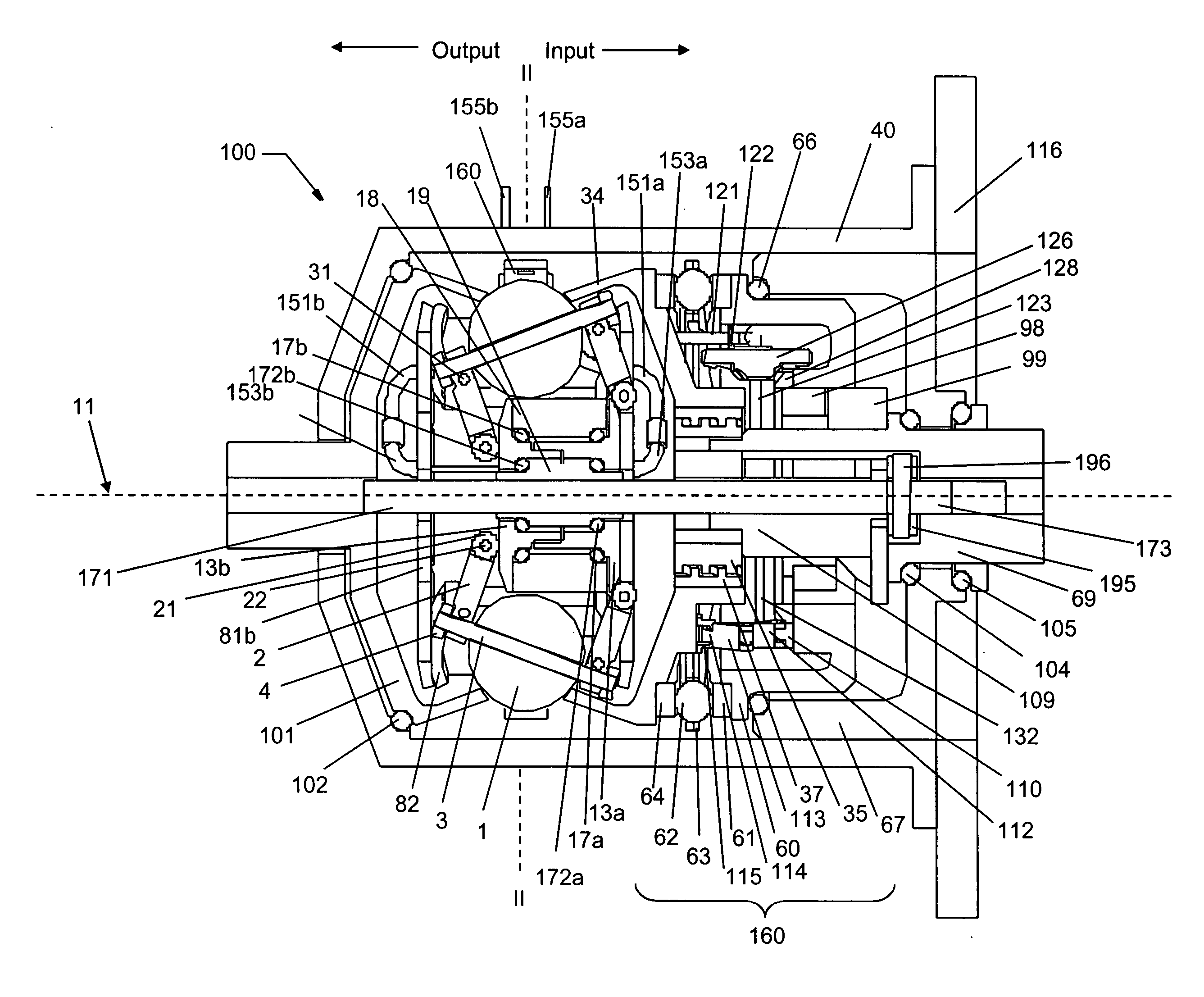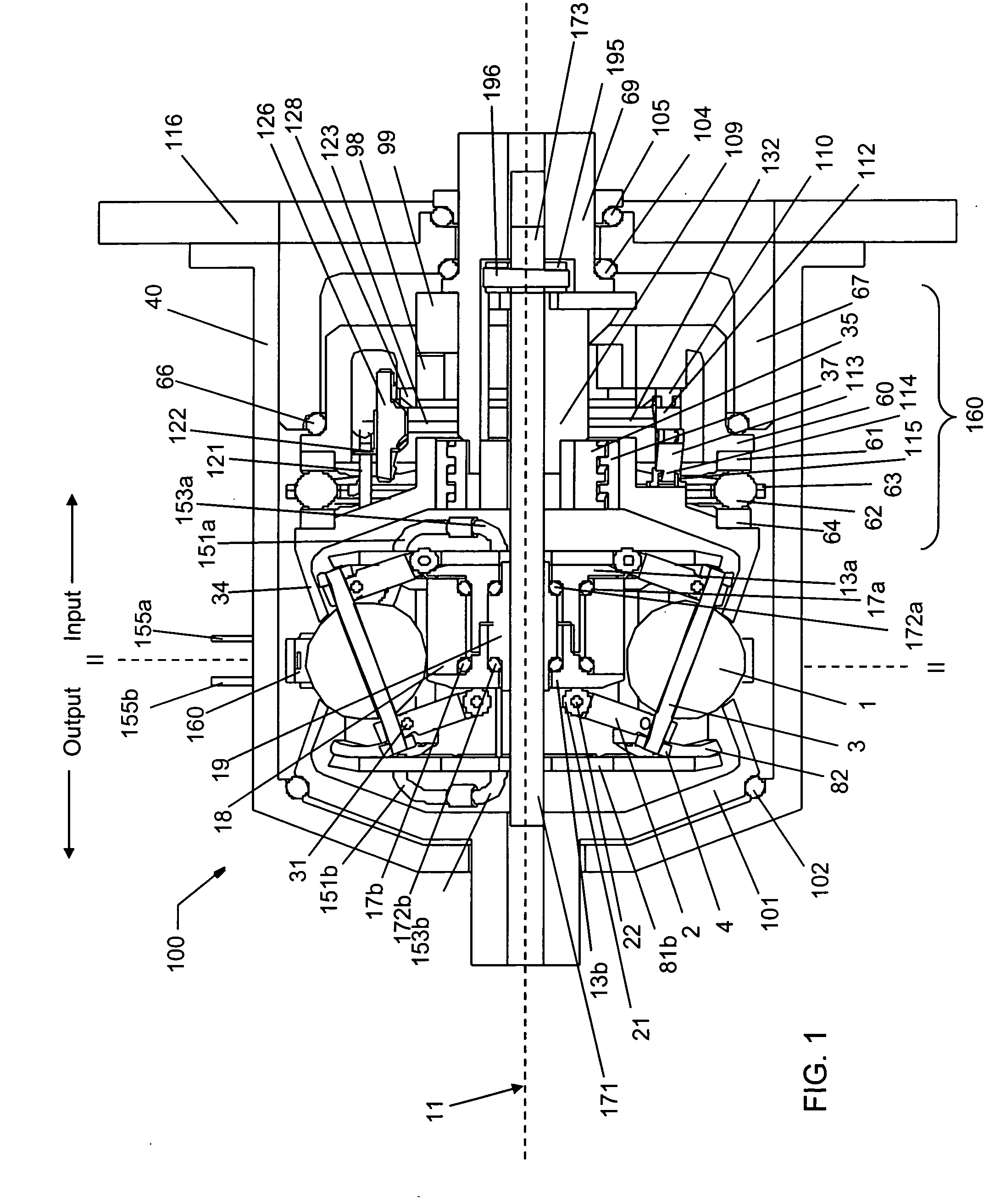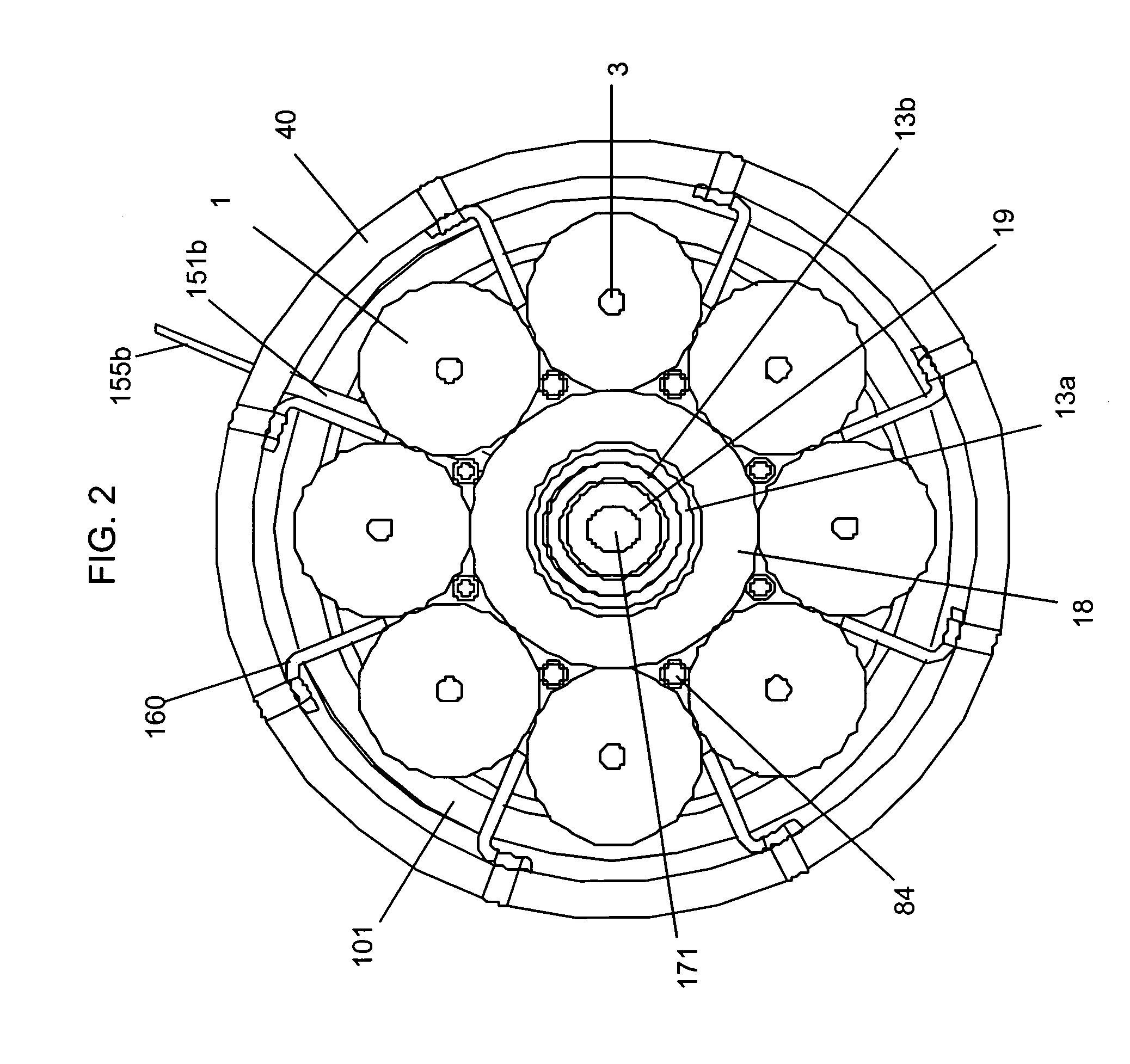Continuously variable planetary gear set
a planetary gear set, continuous technology, applied in the direction of gearing, mechanical equipment, transportation and packaging, etc., can solve the problems of difficult shifting of the axis of rotation of each of the traction rollers, the success of traditional solutions is limited, and the use of iris plates can be very complicated
- Summary
- Abstract
- Description
- Claims
- Application Information
AI Technical Summary
Benefits of technology
Problems solved by technology
Method used
Image
Examples
Embodiment Construction
[0092] Each of the variations that will now be described may have advantageous characteristics for particular applications. The variations can be modified and controlled as necessary to achieve the goals for any particular application. Specific embodiments will now be described and illustrated that employ some of the variations described herein and / or listed in the Tables provided in U.S. patent application Ser. No. 10 / 788,736, which were incorporated above by reference. FIGS. 11 and 12 illustrate one embodiment of a transmission 1100 that is a variation having one source of torque input and that supplies two sources of torque output. As before, only the significant differences between the embodiment illustrated in FIGS. 11 and 12 and the previously illustrated and described embodiments will be described. Furthermore, the components illustrated are being provided to illustrate to one of skill in the art how to provide power paths and torque output sources that have not been previous...
PUM
 Login to View More
Login to View More Abstract
Description
Claims
Application Information
 Login to View More
Login to View More - R&D
- Intellectual Property
- Life Sciences
- Materials
- Tech Scout
- Unparalleled Data Quality
- Higher Quality Content
- 60% Fewer Hallucinations
Browse by: Latest US Patents, China's latest patents, Technical Efficacy Thesaurus, Application Domain, Technology Topic, Popular Technical Reports.
© 2025 PatSnap. All rights reserved.Legal|Privacy policy|Modern Slavery Act Transparency Statement|Sitemap|About US| Contact US: help@patsnap.com



